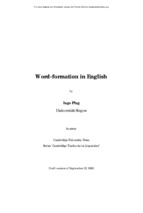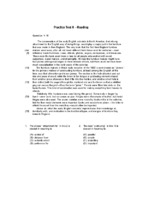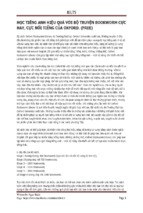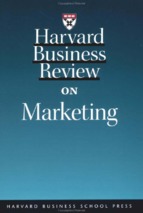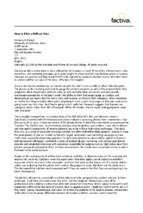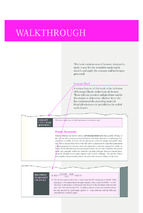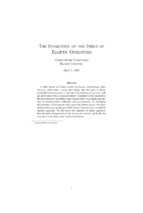A
BEAUTIFUL
CONSTRAINT
A
BEAUTIFUL
CONSTRAINT
How To Transform Your Limitations Into Advantages,
and Why It’s Everyone’s Business
ADAM MORGAN & MARK BARDEN
Cover and text design: Helen Redstone
This book is printed on acid-free paper.
Copyright © 2015 by eatbigfish. All rights reserved.
Published by John Wiley & Sons, Inc., Hoboken, New Jersey.
Published simultaneously in Canada.
No part of this publication may be reproduced, stored in a retrieval system, or transmitted in any form or by any means,
electronic, mechanical, photocopying, recording, scanning, or otherwise, except as permitted under Section 107 or 108
of the 1976 United States Copyright Act, without either the prior written permission of the Publisher, or authorization
through payment of the appropriate per-copy fee to the Copyright Clearance Center, 222 Rosewood Drive, Danvers,
MA 01923, (978) 750-8400, fax (978) 646-8600, or on the web at www.copyright.com. Requests to the Publisher for
permission should be addressed to the Permissions Department, John Wiley & Sons, Inc., 111 River Street, Hoboken,
NJ 07030, (201) 748-6011, fax (201) 748-6008, or online at www.wiley.com/go/permissions.
Limit of Liability/Disclaimer of Warranty: While the publisher and author have used their best efforts in preparing this
book, they make no representations or warranties with the respect to the accuracy or completeness of the contents of this
book and specifically disclaim any implied warranties of merchantability or fitness for a particular purpose. No warranty
may be created or extended by sales representatives or written sales materials. The advice and strategies contained herein
may not be suitable for your situation. You should consult with a professional where appropriate. Neither the publisher
nor the author shall be liable for damages arising herefrom.
For general information about our other products and services, please contact our Customer Care Department within
the United States at (800) 762-2974, outside the United States at (317) 572-3993 or fax (317) 572-4002.
Wiley publishes in a variety of print and electronic formats and by print-on-demand. Some material included with
standard print versions of this book may not be included in e-books or in print-on-demand. If this book refers to media
such as a CD or DVD that is not included in the version you purchased, you may download this material at http://
booksupport.wiley.com. For more information about Wiley products, visit www.wiley.com.
ISBN 978-1-118-89901-4 (cloth); ISBN 978-1-118-89943-4 (ebk); ISBN 978-1-118-89945-8 (ebk)
Printed in the United States of America
10 9 8 7 6 5 4 3 2 1
For Cleo, Josie, Will, and Louis
CONTENTS
Introduction
1
The beauty in constraint, and why it matters
1. Victim, Neutralizer, & Transformer
8. Constraint-Driven Cultures
172
How big companies have learned to love
constraints
16
Our starting relationship with constraints
9. Scarcity and Abundance
2. Break Path Dependence
Why this capability is so important to
all of us today
34
The behaviors and practices that stop us
seeing opportunity in constraint
10. Making Constraints Beautiful
194
208
How to use the ABC approach
3. Ask Propelling Questions
56
How to frame the constraint to force
breakthrough
11. Leadership & The Future of
Constraints
224
The opportunity for progress
4. Can-If
78
How to find solutions to constraint-driven
problems
5. Creating Abundance
102
How to see and access resources we
don’t have
6. Activating Emotions
124
How to fuel tenacity on the journey
7. The Fertile Zero
Notes and Sources
235
Bibliography and Further Reading
249
Image Credits
251
Appendix
253
Thanks and Acknowledgments
263
Index
267
146
Learning from people who succeeded with
next to nothing
vii
INTRODUCTION
The beauty in constraint, and why it matters
A few years ago, the Internet meme “Do Your Best Jagger” sprung from the game of
the same name. The rules were not complicated: players could challenge each other, at
any time, in any place, in any medium they liked, to do an impression of Mick Jagger
of the Rolling Stones performing on stage.
As soon as you received the challenge, you were obliged to do your impression.
There was no waiting until you were somewhere a bit more private, or until you had
taken your coat off, or finished your falafel. You had to channel your inner Mick there
and then, in front of whatever audience you found yourself—and in the consequent
video lay the success of the meme.
The interesting question is not so much why one would ever start on this kind
of madness, but why the game worked so well. How was it that, even when imitated
poorly by a reluctant amateur at the counter in Subway, the audience understood that
Sir Michael Philip Jagger was briefly in their midst? How did the veteran rocker come
to create an onstage routine recognizable to anyone with even the briefest acquaintance
with a Rolling Stones concert?
The answer lies in the beneficial effect of a constraint.
In Keith Richards’ autobiography, Life, Jagger’s fellow Stone explains how this
distinctively flamboyant style came about. When the Stones started, he says, they
played very, very small venues, and by the time the equipment was set up and the
audience in place the singer often had a space no bigger than the size of a table to
perform in. But as the front man of a band ambitious to break through, Jagger learned
to work it, even in such a confined area, and it was from this combination of desire and
restriction that his unique moves evolved.
Introduction: The Beauty in Constraint, and Why It Matters
1
At some point, consciously or unconsciously, the young singer made a decision
about how to respond to the space constraint. It could have led him to be static,
restricted, somehow less; instead he used it as stimulus to be more dramatic, engaging,
distinctive, compelling. He used it to make him more.1
Beauty or the beast?
Constraints have a bad rap. Constraint is, by definition, a negative thing. Its imposition
prevents us from acting as we would like to, because it restricts us in some important
way. Constraints hold us down, knock us back, make us fail. “Don’t fence me in,” the
old song says: if you want me to show what I can do, then leave me unconstrained.
This book’s aim is to show how and why the opposite is true. How constraints can
be fertile, enabling, desirable. Why they are catalytic forces that stimulate exciting new
approaches and possibilities. How they can, in fact, make us more than we were, rather
than less than we could be. Why we should see in them beauty, rather than the beast,
and why that is more important now than ever.
The invisible gift
The beneficial power of constraint is all around us, whether we recognize it or not.
In lifelong relationships, we commit to one partner to the exclusion of others; the
constraint we put on ourselves allows us to focus our emotional energy on building
a life with that person, and gives us a deeper level of intimacy and security in return.
In play, we understand that the limitations our favorite game’s rules impose also give
that game its unique character, energy, and pleasure; to relax those parameters means
less of each. And a critical part of good parenting lies in understanding what limits are
beneficial both to our children and to our family life—and then staying true to them,
whether they are welcomed by our adorable little digital natives or not.
In business, the forced but delicious fruits of constraint are all around us, their
starting impetus now all but forgotten. Google’s home page is as simple as it is because
that was the limit of Larry Page’s coding ability at the time. He couldn’t afford external
resources, and all he knew how to do was create a search box and a logo—so while the
rest of the search brands visually cluttered their home pages, Google’s simplicity stood
out for its understated respect for the user. Mario, the most famous character in the
2
A BEAUTIFUL CONSTRAINT
world’s largest entertainment business, is as colorful as he is because of the challenges
of eight-bit technology: to compensate for poor pixilation definition, designer Shigeru
Miyamoto gave the character a large nose to emphasize his humanity, a mustache to
obviate the need for a mouth and facial expressions, overalls to make it easier to see
his arms in relation to his body, and a cap to free him from the problems of animating
hair; the most recognizable character in video game history was born of technical
constraints. Basketball owes much of its relentless energy to the introduction of the
24-second shot clock in 1954. And Twitter—well, we all know about Twitter. Which
of us would be using Twitter at all today, if it had a limit of 14,000 characters rather
than 140?
While the benefits differ, each of these constraints prompted a kind of enhancement.
The people working with them made their constraints beautiful.
New realities that call for a renewed inventiveness
Any good business has always worked within clear parameters. The whole concept of a
brand, for instance, is in effect a beautiful constraint. It is the clarity on what that brand
is not, as much as what it is, that allows a team to focus on finding fresh, relevant, and
inventive ways to be true to what it stands for. When a brand stops respecting those
limits and tries to become something it is not, it becomes weaker.
As authors and practitioners, we have spent most of our professional lives thinking
about strategy and constraint. Our company specializes in challenger brands and
businesses, for whom an ability to turn constraints to their advantage is particularly
important. Challengers always have ambitions larger than their resources, and often
lack what conventional wisdom would consider to be critical: a marketing budget, an
R&D department, or a certain kind of functionality, for instance. They have to work
with their constraints, reframing the conversation, creating a different marketing or
business model. Indeed, how a challenger can make constraints beautiful often lies, for
them, at the heart of a successful strategy.
In the sixteen years since we started eatbigfish, there has been a broader shift
toward thinking like a challenger. It has become common to hear established market
leaders talking about the need to maintain a challenger mindset as they seek to keep
pace with a changing world, alert to insurgents keen to eat their lunch. Forced to
Introduction: The Beauty in Constraint, and Why It Matters
3
compete for growth with ever-leaner headcount,
resources and time, the injunction to “do more with
less” has entered the mainstream—albeit without
any real definition of what that means or how to do
it. Regardless of the nature or size of the business,
constraints of time, resources, and people are here to
stay. One of the leadership challenges of today, like it
or not, is the requirement to grow within constraints.
There is no shortage of stimuli here. All around
us we see a new generation of inventiveness with
constraint at its heart. Cars that go faster while using
less fuel, fast food that’s healthier, farming methods
that create greater yields while using less water.
Sometimes these businesses are responding to
constraints imposed on them. A new beer company,
launched in the recession, lacked a marketing budget
and was denied a bank loan. So instead they shared
equity for cash, multiplying customer loyalty and
advocacy, and became the fastest growing foodand-drink brand in the UK. Four California schools
found a way to catch students up three grade levels
in a year while biting down on a reduced budget.
An unloved, long-struggling detergent brand, denied
access to superior cleaning ingredients, found a
different way to create value, and became Unilever’s
fastest-growing global brand.
Often, though, they are businesses that look to
create breakthroughs and competitive advantages by
imposing challenging constraints upon themselves.
A new boutique hotel chain created a high-end
yet affordable experience by denying itself many
of the givens of a great hotel, such as the reception
desk and restaurant. A seventy-year-old furniture
4
A BEAUTIFUL CONSTRAINT
The injunction to “do more
with less” has entered the
mainstream—albeit without
any real definition of what
that means or how to do it.
company set itself the target of producing a coffee
table for just twice the price of a latte to put on it,
and found an entirely new way to make a table. The
ruling body of a motor sport precipitated a clutch
of new innovations by requiring every competing
team to produce engines that were 30 percent more
fuel efficient, while maintaining the speeds that keep
audiences excited.
We are living in an era of extraordinary people
rewriting our sense of what is possible. They make an
unarguable case that a constraint should be regarded
as a stimulus for positive change—we can choose
to use it as an impetus to explore something new
and arrive at a breakthrough. Not in spite of the
constraint, but because of it.
The Age of Scarcity, The Age of Abundance
We sit at a nexus between an abundance of
possibilities on one hand, and the reality of scarcities
on the other. As business people, there is so much
insight and opportunity available to us today. If
we care to, we can learn how dynamic companies
are breaking through, anywhere on earth. We have
unprecedented opportunities to connect with our
customers. Scores of potential partners could help us rethink, retool, manufacture,
source, create, connect, and grow. And we can access the knowledge of everybody in
our business, 24/7, if they would only take the time to reply to us. Which is where
scarcity, the other reality, kicks in. Because, like us, they are all under pressure to
do more with less, to manage an abundance of choices with tight budgets and lean
teams. And these are only the current constraints. Fluctuating raw-material costs,
retailers looking to recoup their own reversals in fortune from us, changes in the
regulatory landscape, emerging new competitors from unexpected sources—every
year offers a fresh series of constraints that will shape our trajectory forward, for
better or worse.
Our personal and social lives are defined by the same dynamic of expanded
opportunity and keenly felt limitation. We have access to more entertainment,
knowledge, and personal development options than we will ever have time to use.
Technology puts us in touch with an ever-expanding number of people. The ability
to explore and share what we are passionate about is exponentially greater than it
was even fifteen years ago. And yet we also feel short of time, energy, and attention.
As Arianna Huffington has put it: “A world of too much data, too many choices, too
many possibilities and too little time is forcing us to decide what we value.”2
And as global citizens, we participate in a world of finite natural resources, with
an increasing global population and increased demands from a new wave of ambitious
economies. Potential new sources of abundance—cheap energy from solar, or more
ideas from greater access to knowledge, for example—have yet to fully answer the
challenges. We will need to learn to live with new kinds of constraints if we want the
planet to support the next generation in the way it has supported ours.
So are things getting better, or are they getting worse? The answer, we have to
believe, lies in our own hands. It hinges on how we choose to approach these new
and emerging constraints, and whether we have the confidence to choose the path
toward stimulating new possibilities. We are the stories we tell ourselves, according to
psychologist Timothy Wilson; if we believe constraints only limit us, then they will.
But Wilson also notes our remarkable capacity to redirect our narrative by taking small
steps in a new direction, which become self-sustaining when they pay off. Our hope
is to provide those steps, and start to change the narrative, so we can all grow to make
constraints beautiful.3
Introduction: The Beauty in Constraint, and Why It Matters
5
What is a constraint? And what do we mean by making it beautiful?
So where do we begin? It is striking that, while the world is full of encouragement
in this regard (most cultures have an expression equivalent to “every cloud has a
silver lining”), it’s harder to find practical ways to translate that encouragement into
action. The first version of the old American expression “When life gives you lemons,
make lemonade” dates back to 1915; yet in the intervening hundred years of human
experience nobody seems to have sat down to write a second part to the saying: what
the recipe for making lemonade might actually be.
There is a body of influential work on the modern relevance of lean,4 frugal
innovation,5 Jugaad,6 and even the value of dyslexia to entrepreneurs.7 Each of these
offers insights into a different part of what it means to thrive within a particular set of
constraints. Where substantive work has been done specifically about constraints in
business, its focus is different from ours. The Theory of Constraints (known as TOC),
first introduced in 1984, differs significantly from our ambition, both in its narrow
definition of a constraint and in the type of response it proposes. It defines a constraint
in terms of a performance-limiting restriction on a system, and specifically the one
that is most limiting—the organization’s weakest link. TOC proposes solutions for
restructuring the organization, or key processes within it, in order to manage that
constraint, eliminating its negative effect. Once this weakest link has been removed,
what now becomes the new weakest link in the system becomes the next constraint on
which to focus.8
TOC is a successful approach for some situations and businesses. Our interest,
though, is not in eliminating constraints, but in positively leveraging them. We are
proposing broader definitions of constraints and the situations in which we encounter
them, and describing methods that can unlock a constraint’s transformative benefits to
make it a beautiful source of possibility and opportunity.
It will help to define first what we mean by a constraint, and what we mean by
making it beautiful.
In this book, a constraint is a limitation, imposed by outside circumstances or by
ourselves, that materially affects our ability to do something. Constraints fall into four
different groups: constraints of foundation (where we are limited in something that is
usually seen as a foundational element for success); constraints of resource (where we
6
A BEAUTIFUL CONSTRAINT
are limited in an important resource, such as money or people); constraints of time
(where we are limited in the amount of time we have to do something); and constraints
of method (where we are limited by having to do something in a certain way). An
example of a constraint of foundation would be starting a shoe store without being
able to let customers try shoes on before purchase (because you are an online retailer).
A constraint of resource might be an airline having to fly a four-plane route, but having
only three planes to do it with. Constraints of time need the least explanation here; we
will all recognize these in our lives. And an example of a constraint of method might
be making a hospital apply the systems of serving fast food to the way it performs lifechanging eye surgeries.
By making a constraint beautiful, we mean seeing it as an opportunity, not a
punitive restriction, and using it as a stimulus to see a new or better way of achieving
our ambition. You will probably be familiar with the examples we have used above to
illustrate the point.
The first example, the shoe store that wasn’t able to offer customers the chance to
try before buying, was, of course, Zappos. That limitation spurred them to introduce
two important dimensions to the Zappos experience: first, a “we’ll pay all shipping
and make it really easy for you to return” process and, second, what they famously
call “wow” customer service: warm, friendly interactions that have made customers
not only comfortable buying shoes in this way, but evangelists for Zappos, with Net
Promoter Scores typically in the early 1990s. CEO Tony Hsieh now describes Zappos
as a customer service business that happens to be selling shoes. They could, he says, just
as well go into the airline business.
The second example, a constraint of resource, is about Southwest Airlines. In the
1970s, they had to sell one of their four planes, but were determined not to lose any
of the routes they had acquired. To keep them, they were forced to find a way to fly
four routes with three planes. This led them to a different constraint, one of time:
they worked out that they could fly a four-plane route with three planes only if they
could hit a ten-minute turnaround time. They had to get all the arriving passengers
and luggage off, clean the plane, and get the departing passengers and luggage on
within ten minutes—when the average U.S. domestic airline turnaround time was
an hour. The ways they found to do this (introducing the then unfamiliar concept
Introduction: The Beauty in Constraint, and Why It Matters
7
of unallocated seating, for example), allowed them to maintain their four routes and
even bring in new customers, who loved not sitting around on the tarmac as they
did on other airlines.9 New practices became parts of their longer-term model as a
low-cost airline and the record years of profitability that followed. And the moment
defined for the company what made them special: a few years ago when we interviewed
Colleen Barrett, then President of Southwest, and asked her what best captured the
spirit of Southwest for her, this was the story she told—a story of constraint-driven
inventiveness some thirty years before.
The third example, of a constraint around method, is about Aravind eye hospitals.
Their founder set himself the ambition of delivering mass-market, high-quality eye
surgery for poor Indians at a fraction of what a comparable operation would cost in
the West. His obsession with efficiency famously led him to emulate the assembly-line
discipline he saw at McDonald’s Hamburger University. Now Aravind can carry out
60 percent as many eye operations as Britain’s NHS every year, at a thousandth of the
cost, and with half the rate of surgical complications experienced in eye surgeries in
the UK.10
In each of these long-established businesses, constraint linked to ambition has
spurred better practices or even transformations. In each case, the people involved
accepted the constraint and found a new opportunity in it.
We are not suggesting that all constraints have the potential to be beneficial. The
latest research into the psychology of scarcity, which we will explore later, has shown
the disabling effect of extreme poverty, creating a kind of tunnel vision that prevents
people from being able to focus on anything else, or have any real insight on how to
improve their situation. Extreme constraints like this, so fully dominating a life, are
not constraints with a potential beauty, and this book does not attempt to encompass
them. But most of us are fortunate not to be in this position; it is the broader set of
constraints in our lives that we will focus on.
The learning journey: Five groups for whom constraint means more
Are the people behind cases like the ones above just a few brilliant individuals, or is
there an underlying approach we can all learn from? We weren’t expecting to find
a formula, but we thought we could, at least, establish whether the ability to make
8
A BEAUTIFUL CONSTRAINT
constraints transformative was an intuitive process—the unique gift of an exceptional
individual—that could not be transferred, or whether we could uncover and develop
just enough process to be useful to a broader group. Three years of research took us to
five different sources of learning:
1. Creative and problem-solving professionals
For engineers, designers and other creative problem-solvers, a formal definition
of the constraints within which they must work is essential to channel energies and
expand creativity. It was David Ogilvy, eponymous founder of the iconic advertising
agency, who celebrated this relationship with the remark, “Give me the freedom of a
tight brief.” We went to talk to some of the most admired in their field: Michael Bierut,
a principal of the design firm Pentagram, whose clients include Saks Fifth Avenue
and the New York Times; Dan Wieden, the adman who created Nike’s advertising;
and Yves Behar, the product designer behind One Laptop Per Child and Jawbone.
Alongside this group of “creatives” we added the likes of Farm Input Promotions Africa
(FIPS-Africa), who are finding ways to increase productivity for smallholder farmers
in Kenya, and the principals of Stanford University’s Design for Extreme Affordability
course, who teach students to develop products and services for the world’s poor.
2. Challengers in Business who indeed do more with less
We drew on our own research over the last sixteen years for the Challenger Project,
a study in which we have interviewed over two hundred brand owners and business
leaders who achieved significant growth in the face of different kinds of constraints.
Over the same period, our consultancy has also worked with many different types of
companies and challenges; our experience is hands-on and practical, not simply that
of the ivory tower; it was this very experience, in fact, that drew us to this subject in
the first place.11
3. Academic research
There are over 70 academic studies relating to the effects of constraints on creativity.
Janina Marguc at the University of Amsterdam helped us explore them all. Several of
these were illuminating, and we have referenced them where they added insights, or
helped more fully explain some of our own findings or beliefs.12
Introduction: The Beauty in Constraint, and Why It Matters
9
4. Cultures and ideas explicitly linked to overcoming constraints
There are interesting subcultures that deal with constraints. In computer science,
the concept of kludging (finding a quick and dirty solution because you have no
other option) is related to the hacker ethic, and the French have the related concept
of Système D. Some countries have similar, farming-led cultures around a “can-do”
attitude towards constraints—South Africa’s Afrikaans expression “a farmer makes a
plan”(essentially working one’s way round an obstacle or setback) is not far from the
Indian culture of Jugaad, and finding a solution to a challenge with whatever you have
at your disposal. Each of these is a way of thinking about tackling a problem, rather
than a process, but provided useful learnings nonetheless.
5. Old dogs learning new tricks
We also looked at large companies that had learned to use constraints productively
in different areas of their businesses. From these we gained confidence that something
like the “just enough process” we were seeking to define could also be learned and
applied within large organizations that had not always behaved in this way.
Our journey took us to San Francisco and to New York University to talk to leaders
of some of the most influential studies on the effects of constraints on creativity,
to Johannesburg to learn how the South African mining industry communicates
critical safety messages to audiences with limited common language, and to Mumbai
to understand how a retailer made a success of a western franchise whose products
neither its consumers nor its staff understood. We looked at the invention of the
aircraft carrier, the transformation of healthcare in Alaska, and the creation of human
capital in Taiwan. We learned from people who had sudden epiphanies and people
whose breakthroughs came one step at a time over twenty years. We visited corporate
cultures that routinely ask employees to tackle questions they have no idea how to
answer, and succeed. We met supply-chain directors, pit stop mechanics, marketers,
bakers, entrepreneurs, educators, start-up founders, scientists, designers, agronomists,
and engineers, all of whom were ambitious and determined enough to have found
ways to use constraints to their advantage, and from whom we learned what we
needed to develop tools and frameworks for applying the learning to other situations.
10
A BEAUTIFUL CONSTRAINT
- Xem thêm -


